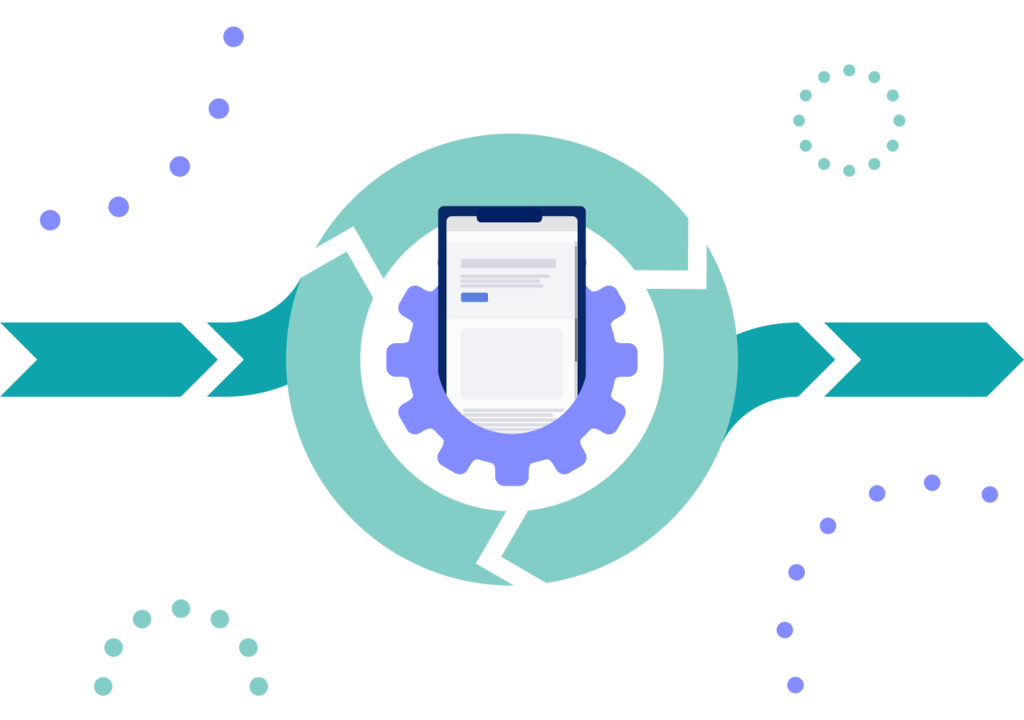Rapid application development
Align development processes with the fast-paced demands of modern business environments

What is rapid application development?
Rapid application development (RAD) is an agile approach to software development that emphasizes quick iteration and user feedback. It prioritizes speed, flexibility, and reduced development time. In essence, RAD lets you swiftly create applications through iterative prototyping, minimizing planning in favor of quick adaptation to evolving requirements.
This methodology stands out for its collaborative nature, involving end users early in the development process to ensure a result that aligns closely with user needs and expectations. And when it comes to enterprise-level development, RAD catalyzes efficient and responsive application creation.
Benefits of RAD in an enterprise context
In an enterprise context, RAD yields multiple benefits:
- Time to market: RAD accelerates time to market by swiftly translating ideas into functional applications, a crucial component for staying competitive in dynamic markets.
- Collaboration: RAD fosters real-time collaboration with an iterative process, ensuring the end product aligns precisely with user needs.
- Agility: RAD’s enhanced adaptability allows for quick adjustments, which are vital in an ever-evolving business landscape.
- Innovation: RAD’s agile approach encourages innovation, as rapid prototyping enables experimentation with various functionalities.
- Cost effectiveness: RAD makes dev more profitable since reduced development time directly correlates with lowered expenses.
- Customer satisfaction: RAD promotes customer satisfaction by delivering solutions promptly and refining them based on immediate feedback.


What is a RAD methodology?
A RAD methodology is an iterative and accelerated approach to software application development. It emphasizes rapid prototyping and feedback, prioritizing speed and flexibility. Unlike traditional waterfall methods, RAD breaks down the development process into smaller, more manageable modules.
This methodology thrives on quick iterations, fostering a dynamic development environment where changes can be swiftly incorporated. Overall, RAD methodologies prioritize agility, user involvement, and rapid delivery, making them well suited for projects where time to market and responsiveness are critical factors.
How does RAD work?
RAD streamlines the development process through iterative prototyping and continuous user feedback, ensuring a responsive and adaptable approach to meeting project requirements.
The RAD process typically involves the following steps:
- Identifying business objectives and defining data requirements
- Designing the database structure to support the application and identifying relationships between data elements
- Creating process flows for the application's functions and identifying user interactions
- Building the application as well as testing and refining the application

Reach high productivity with low-code app development on the Pega Platform.
Challenges of RAD
- Missed requirements: One primary concern is the potential for overlooking thorough requirements analysis, as the speed of RAD might prioritize quick outputs over comprehensive planning. This can result in misunderstood user needs and applications that fall short of expectations.
- Communication: The iterative nature of RAD demands robust communication and collaboration among team members. Any gaps can lead to misunderstandings and rework. Striking the right balance between speed and quality is crucial, as rapid development might sacrifice long-term maintainability if not managed adeptly.
- Integration: Adapting existing processes and legacy systems to RAD methodologies can pose integration challenges. Business constraints may also limit the extent to which legacy systems can be modernized or replaced, making integration more complex.

How to scale a RAD program
Scaling a RAD program involves strategic considerations to maintain efficiency as the volume and complexity of projects increase:
Standardization
- Establishing standardized practices and templates streamlines development processes, ensuring consistency across diverse projects.
Knowledge sharing
- Encouraging a culture of knowledge sharing and collaboration among development teams enhances collective expertise and accelerates learning curves for new projects.
Low-code development
- Employing low-code platforms becomes instrumental at scale, enabling faster development with minimal coding while maintaining the flexibility to accommodate specific project requirements.
Automation
- Embracing automation, especially for testing and deployment processes, ensures speed and reliability as the program expands.
Modularity
- Prioritizing modular architecture facilitates scalability, allowing components to be reused across different applications.
Monitorization
- Continuous monitoring and feedback mechanisms help identify bottlenecks or areas for improvement, ensuring that the scaling process remains agile and responsive.

The future of application development
Application development is undergoing a rapid transformation, driven by continuous advancements in AI. From the tools and processes used by developers to the capabilities and experiences offered by the applications themselves, AI is fundamentally transforming every aspect of application development.
Learn more about Pega GenAI Blueprint™, which uses AI to further optimize workflow design and accelerate the development process.
